Author Ellen Alpsten discusses her sweeping novel about the Russian ruler Catherine I, Tsarina.
For her interview with Reading Group Choices, Ellen Alpsten talks about what captured her imagination about Catherine I’s story, Russia past and present, the many sources of research and inspiration, and what’s in store for the sequel…
Reading Group Choices: You mention that you first came across Catherine’s story when you were 13, and knew you had to tell it. Did you have the notion to be a writer that young?
Ellen Alpsten: True – the fascinating story of Catherine I of Russia had never left me, ever since I came across a book called Germans and Russians in my parents’ library, charting the millennial history of those two people. These were pre-screen days and I lived in the countryside in a village home to more cows than people, so I read voraciously and the book was written in a very entertaining way. Despite terrible tragedies and two horrendous wars, there is a deep fascination for each other. Two people and countries that toiled and functioned to terrible ends, but who are equally endowed with an incredible soulfulness and depth, an innate understanding of beauty and life, of tragedy and fate. One chapter in Germans and Russians was devoted to Catharine I: I think she is “my” Tut-Ankh-Amun, as she was always there but had slid into the shadows of history. I was destined to find her, I believe.
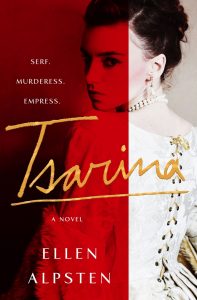 As for the idea of becoming a writer, my paternal grandmother had been a published author, unusually so for her time and age. She gave it up to marry, have six children and live through WWII. Also, my teachers always encouraged me to write, from a young age on. I wrote my first novel aged 10 – mercifully, it has been lost.
As for the idea of becoming a writer, my paternal grandmother had been a published author, unusually so for her time and age. She gave it up to marry, have six children and live through WWII. Also, my teachers always encouraged me to write, from a young age on. I wrote my first novel aged 10 – mercifully, it has been lost.
RGC: How did the story stay alive in your life and imagination until you were ready to write it, and what made you “ready” – life, circumstance, skill, courage, or all of the above?
EA: I love history, despite later studying politics, philosophy and economy. More than that, I love great historic novels. I grew up with Angelique, Desiree and such fabulous works as The Medicus, which were based on solid research and led the reader into a different world. My father had grown up in the GDR (German Democratic Republic) and fled the Soviets at the age of 16 through a night forest. Germans and Russians are linked by a historic hate-love and the Romanovs were a very “German” family at the end of their reign through various marriages. Also, Catherine the Great was originally a German Princess. So, her story was close to my imagination: the fact that she was “the other Catherine” stuck.
As a student in Paris, I dabbled in writing but led a very busy social life. Still, I won the short story competition of my “Grande Ecole” with a novella entitled Meeting Mr. Ghandi. That encouraged me. During my first job in London, I realized that I had to follow some of the best advice I ever got about being a writer. As a student in Paris I worked as an assistant to the bestselling author Benoite Groult: her novel Salt on My Skin was a 90s smash hit and she was a true Parisian intellectual: sharp-witted, smoking like a chimney, wafting about in a huge “enfilade” 7th arrondissement apartment, wearing oversized horn-rimmed glasses. She gave me some valuable advice – be serious about your writing! When I joined a Graduate Trainee Scheme in a big London PR agency, I hardly earned any money and I knew very few people: every evening, I sat and wrote. There is no excuse, I realized. If a story sears your soul, tell it! Tsarina certainly was such a story…
RGC: How did you decide on the structure of the novel? Did you always plan to return to the opening dramatic moment of Peter’s death at the end?
EA: I should really plan more. In truth, I just thought about an exciting starting point, a conflict that would draw the reader right in. These days, one has to want to read on after the first 10 or 20 pages. No modern reader gives an author any more time. We have moved on since the days of the classics such as Moby Dick. There is just too much competition for people’s attention out there and a reader gives us his or her most valuable gift: TIME. Only once I started writing, I realized what a big book this would become. As so often in life, naivety protects! I felt I had to divide the narrative into chunks – Tsarina is a page turner, but not an easy read. The structure imposed itself and the book ends where it begins, which I like. For the Tsarina sequel, I have incidentally chosen a similar structure – again, we have an incredible heroine at crossroads of her life and at a life-or-death moment!
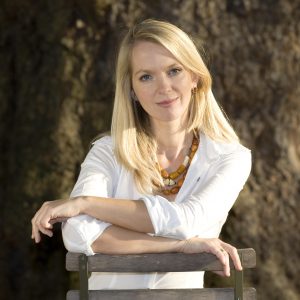 RGC: Which character other than Catherine did you feel the most drawn to while you were writing? Why?
RGC: Which character other than Catherine did you feel the most drawn to while you were writing? Why?
EA: I read for one year before daring to write the opening sentence – and realized that the biggest challenge would be to not make another oeuvre about Peter the Great, who tried to usurp the narrative with his larger than life character wherever possible – men! He looms impossibly large, and readers have qualified Catherine’s and his very modern relationship – it’s sex and attraction, but also a deep friendship and admiration – as either “married to the devil himself” or as “beyond interesting.” Peter the Great was an avaricious learner; soaking all and everything he sees and learns up like a sponge, and then squeezing that knowledge out over Russia, drowning his country in a flood of ideas. He turned the semi-Asian Muscovy into the semi-European Russia and in all his ticks and spleens, he’s a simply fantastic character: interested in everything, callously cruel, with utter disregard to anything or anyone that doesn’t match his ideas, always ready to pay the highest possible price for the fulfillment of his wishes, a huge sensuous appetite for be it food, drink or love – LIFE.
He is a truly Baroque character, bridging influences from the Renaissance towards Enlightenment. I love his confidence in his fate and his destiny, the trust with which he pursued his dreams: conquering the Baltics and making that earth forever Russian by stomping St. Petersburg out of the earth, conjuring a first small timber cabin from muddy swamps which were home to bears and wolves. He is mesmerizing, but shocking as well, as multi-layered as any human can be: deeply disturbed ever since witnessing the brutal execution of half his family at the age of nine, he suffered from epilepsy and perhaps never quite trusted the sun to rise the next day. Was it for that that he loved “turning the world upside down”? Possibly the heroine of Tsarina as well as his best friend Menshikov, a former pie-baker, are the utmost expression of that desire for tomfoolery. Had he wished for Catherine to rule? We don’t know, for the decision was taken off his hands – and she set the stage for everything that was to follow politically, an unprecedented century of female rule in Russia.
RGC: You mention that not much is know about Marta’s/Catherine’s life until she enters the Glück household. Is there a specific question from her early life – or even later – left unanswered from the documentation you wished you knew the truth about?
EA: There is as good as no documentation about her early life – her full name, and her parents’ names, are as much disputed as is her possible birth date. However, in true fairy tale fashion, she went on to search for her family in the vastness of the Russian Empire and found them. That anchored her past to a degree. My research focused on the circumstances of the serfs, who are unfree peasants attached to an estate. I wonder what took her into service at the Glucks – again, like in the fairy-tale, they met again. Ernst Gluck was such a learned man that the Tsar was eager to employ him. Marta/Catherine promoted the family greatly. She never forgot anyone who showed her kindness and generosity, as it was such a rare quality in those days. Was it luck that had led her to their household in Marienburg, which subsequently was taken by the Russians, or destiny…?
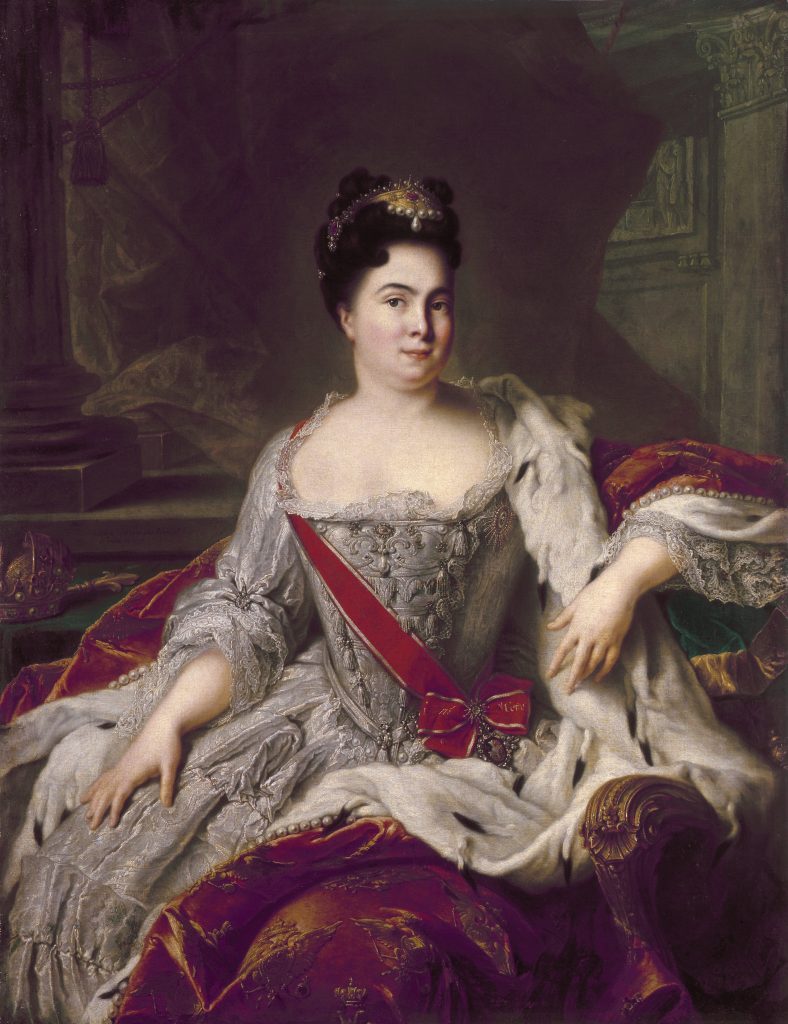 RGC: You mention in your author letter that Russia at the time of the novel shares many similarities with contemporary Russia in how it is ruled and how the citizens are treated. What do you imagine Catherine would think if you dropped her back into the country today?
RGC: You mention in your author letter that Russia at the time of the novel shares many similarities with contemporary Russia in how it is ruled and how the citizens are treated. What do you imagine Catherine would think if you dropped her back into the country today?
EA: What an interesting question! Tsarina is an historic novel, but in our age of female empowerment, it does feel shockingly modern and contemporary. Catherine is a woman who overcomes every obstacle, even if fate rages against her. She rises from dirt poor beginnings to the most dizzying heights of power and unimaginable riches. It still happens in Russia today – think of Supermodel Natalia Vodianova, who once sold vegetables at dawn on a Kiev market and who just got married to the son of LVMH founder Bernard Arnault! Marta/Catherine loved a practical joke, and she would have been amused by how little things had changed. What makes Tsarina special is that she is a foreigner, a Baltic German, observing Russia and the Russians. The reader learns about a past which is the present. We have the opulence of the Russian ruling class as much as the deprivation and helplessness of the Russian people. Nothing is as abundant and as superfluous as human life. There are still forced laborers in Russian prison camps, and everyday humiliation, if not quite the mock executions the Soviets specialized in, is omnipresent.
On a more metaphysical level, her story is as contrasting – and unchanging – as the Russian soul itself, casually combining seemingly insurmountable contrasts: callous cruelty and overwhelming empathy; overt hostility towards all things foreign, yet selfless hospitality to strangers; freezing, interminable winters – zima – and the summers’ white nights. So, who knows, if she was around today, she might first seduce Putin and then wrestle power of him?
RGC: You create such a visceral world, and don’t shy away from the brutal realities that occupied the serfs: harsh winters, pollution and disease, how Marta and others like her are bought and sold, and assaulted by those with power. Can you talk about how that constant hardship connects to Catherine’s character and her will to survive, and how unglamorous the real lives of historical figures – both high and low – really were?
EA: Growing up as a serf – an unfree peasant attached to the estate of the Russian church in Swedish Livonia (today Estonia and Latvia) – did not allow for airs and graces. Marta/Catherine was destined for a life of hard labor from dawn till dusk. When she met Peter aged nineteen or twenty, her character was set, and her stratospheric rise did not change her. She won Peter with her earthy sex-appeal, her beauty and quick wit as well as her crude sense of humor – they both adored practical jokes – her level-headedness, her courage and also her soft heart: “Nobody can be so evil as for you not to find some good in him,” he wrote to her.
Peter’s world, too, was harsh, cruel, and lonely. She was his one true companion, an invaluable asset. As Tsarina, she preferred peace and prosperity, as well as a policy of contracts and alliances, to war-mongering. During her years at the Tsar’s side she had carefully fostered and nurtured relationships – both her female friendships as well as with Peter’s cronies and companions, be they in the military or court administrators. Peter was incalculable in his ambitions and his anger, and she often softened the blow of his knout – quite literally. When he died, everyone at court owed her. Was this behavior cunning, or simply her character? Probably a blend of both in this incalculable world. If you don’t know in the morning if you shall see the sun set, you live the hell out of that day!
As for the real lives of historic figures – yes, that is one reason that people like historical fiction. It is hugely cathartic to think that Peter the Great and Henry VIII suffered from their disability to father a son, or any healthy child for that after a certain point in his life, or that Napoleon must have died in insufferable pain from his stomach cancer. As for Marta/Catherine, giving birth a dozen times and seeing ten of those children die? Par for the course for a woman in those days, be she high or low born.
RGC: One perennial question with historical novels is how an author balances research with the writing. How do you avoid getting bogged down in the research process, and decide how much historical information to include without sacrificing the story?
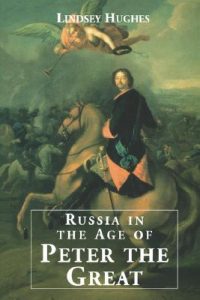 EA: The story seemed like a structure of a house, the research the wattle and daub to fill it out, especially when I realized that, amazingly enough, there was no book about her: no thesis, no biography, no novel, no nothing. But there were sources galore, and infinitely fascinating ones: early travel descriptions, such as the German Adam Olearius visiting Tsar Mikhail Romanov, letters of foreigners at the Russian Court such as Mrs. Rondeau, and, last but not least, Prof. Lindsey Hughes fabulous tome Russia in the Time of Peter the Great. I watched Nureyev and Baryshnikov dance on YouTube as well as the Dogma movie The Ark. I even read Russian fairy tales, which tell you everything about the imagination of a people – an invaluable help. I love Baba Yaga’s house and the invariable ending – the storyteller eats so much honey that his beard drips with it. The book is stuffed to the brim with soul, detail, and truth – and an attempted answer to the question: So, what was her life really like? I slid deeper and deeper into the strange, shocking, sensuous world that is the Russian Baroque, and the Russian soul, reading for almost a year before writing my first word, immersing myself completely into her life and rise.
EA: The story seemed like a structure of a house, the research the wattle and daub to fill it out, especially when I realized that, amazingly enough, there was no book about her: no thesis, no biography, no novel, no nothing. But there were sources galore, and infinitely fascinating ones: early travel descriptions, such as the German Adam Olearius visiting Tsar Mikhail Romanov, letters of foreigners at the Russian Court such as Mrs. Rondeau, and, last but not least, Prof. Lindsey Hughes fabulous tome Russia in the Time of Peter the Great. I watched Nureyev and Baryshnikov dance on YouTube as well as the Dogma movie The Ark. I even read Russian fairy tales, which tell you everything about the imagination of a people – an invaluable help. I love Baba Yaga’s house and the invariable ending – the storyteller eats so much honey that his beard drips with it. The book is stuffed to the brim with soul, detail, and truth – and an attempted answer to the question: So, what was her life really like? I slid deeper and deeper into the strange, shocking, sensuous world that is the Russian Baroque, and the Russian soul, reading for almost a year before writing my first word, immersing myself completely into her life and rise.
While writing, I always had at least five books open, all annotated and marked with Post-its, and it was an all-encompassing endeavor – I did so whilst working night shifts as a presenter on live breakfast TV. Normally I got up at 2am and left the house at 2:30 (my neighbor in the flat beneath thought I worked as an escort, as I cantered down the stairs at any ungodly hour!) came home at 12:00 noon, slept 3 hours, went running in the park, wrote, ate dinner, and went to bed at 21:00 to be fresh for live TV. Repeat, for 1.5 years. In the end I suffered anxiety and depression from sleep deprivation. I really gave this book my all! From that original version 300 pages have since been edited out – so Tsarina as she is today is also a HUGE team effort and I can not thank my editors and publishers enough.
RGC: Catherine’s journey to become the ruler of Russia gets all the attention in the novel, while straightforward historical accounts may have focused instead on her reign. What makes this process of becoming Tsarina more attractive from a storytelling perspective?
EA: As Tsarina of Russia, she preferred peace and prosperity, as well as a policy of contracts and alliances, to war-mongering, an absolute rarity in the Russian history. Her rule was short – two years only – and she was mostly influenced by her advisors who were governed by huge self-interest; Russia was torn apart by Peter’s reforms and opposition to his policies. As such, in her rise from rags to Romanov we witness a milestone in female emancipation and empowerment. It but bears testimony of the strength of human nature and the absolute will to survive. Every possible card in the world was stacked against her, yet she rose to the most unimaginable height of history.
But not only her psychological strength is impressive, her physical condition, too: she bore the Tsar a dozen children, only to see most of them die. She travelled with him all over Russia and Central Asia and accompanied him into the field. Peter the Great and her were lovers, but above all great friends, which is also modern and interesting. He loved her courage, her practical jokes, and her level-headedness, and appreciated her mildness. When we look at her portraits today, people might struggle to see her appeal – though that is a very modern message, too. You can make it happen without adhering to a beauty ideal. If a contemporary wrote: “She wasn’t beautiful, but as warm as an animal,” he speaks of her sex appeal, but above all about her indomitable spirit! Hers is the “ultimate Cinderella story”, as Daisy Goodwin called it – and thus one of the “Seven Big Plots”.
RGC: Are there other powerful female figures from history whose untold stories attract you?
EA: The sequel of Tsarina will answer that – The Tsarina’s Daughter tells the story of her daughter Elizabeth, a beautiful ingenue turning sexy badass, who refuses to adhere to the expectations of her time and who takes a hard decision where she must, and who does things her own very hard way, before she becomes who she is. Any reader who loves Tsarina will be back with the family, which is fantastic. Lots of questions get answered and some of the lives take truly shocking and surprising turns.
And yes, there is much more to come, but I cannot tell yet. There are so many interesting people in that time, and I like the way Star Wars fans out, for example, giving side characters center stage…
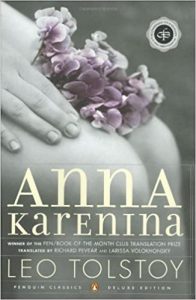 RGC: Tsarina is a sweeping tale. How did other epic Russian novels from the same era inform how your story would be told, if they did have an influence? Which other novels would you recommend, modern or recent, that focus on the same subject or time period?
RGC: Tsarina is a sweeping tale. How did other epic Russian novels from the same era inform how your story would be told, if they did have an influence? Which other novels would you recommend, modern or recent, that focus on the same subject or time period?
EA: I grew up in the African Highlands without TV and my brothers were in boarding school. If any movie ever reached the tiny village cinema, it was a Bollywood production – glaringly colorful and SO wonderfully over the top: Princesses! Witches! Ogres! Magic animals! You say it, they had it. My first books were beautifully illustrated copies of the Greek and Roman myths, which take no prisoners. That certainly influenced the love for sweeping epics. I never wondered: can I write this? It was just what her story demanded. I also read both Anna Karenina and War and Peace and it certainly helped me decide to go all in and to not shy away from anything – least of all the Russian naming system which can be confusing, as people are called by their name & patronym, their family name or their pet-name. We have Alexander Danilovich, who can also be Menshikov, or Alekasha. Thankfully, there is a cast of characters included. If you do it, do it properly. As far as other books are concerned, I enjoyed reading Henri Troyat about Peter the Great and Catherine the Great – it is non-fiction, but hugely entertaining.
Read more about Ellen’s novel Tsarina, and browse all of the great author interviews on our blog!
Image: Catherine I of Russia by
